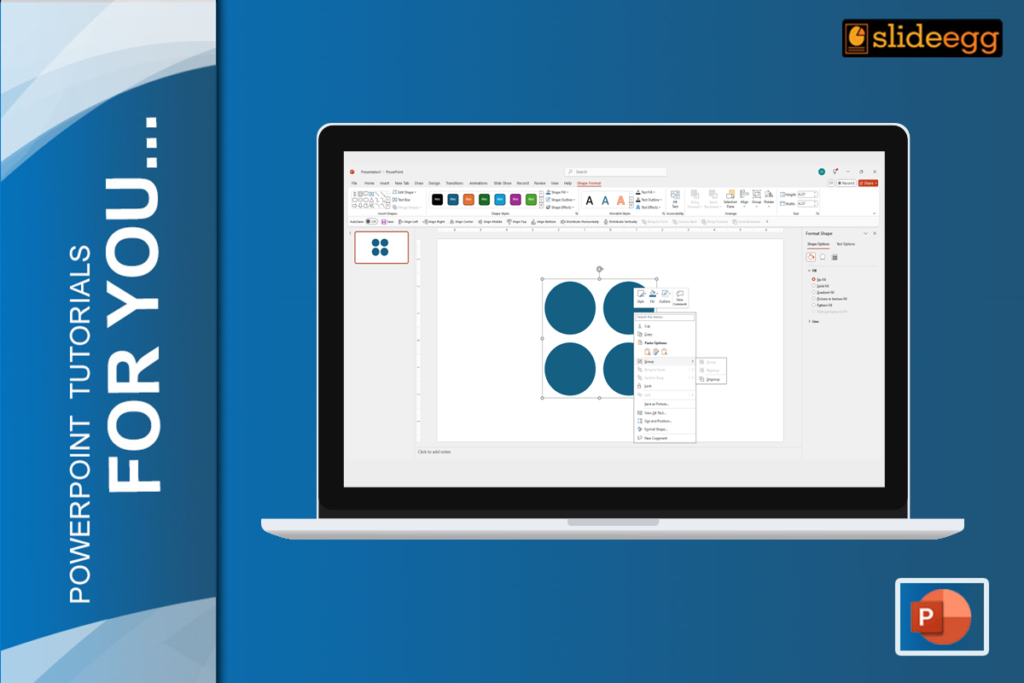Creating a visually appealing and effective PowerPoint presentation often involves tailoring the slide size to suit your specific needs. Whether you’re preparing a presentation for a wide-screen projector or a standard monitor, adjusting the slide size is crucial. In this blog, we’ll guide you through the simple steps to change slide size in PowerPoint.
Understanding Slide Size
Before diving into the process, let’s clarify what slide size means. It refers to the dimensions of your PowerPoint slide, typically expressed as a ratio like 4:3 or 16:9. The 4:3 ratio is the traditional standard, while 16:9 is the widescreen format commonly used for modern displays.
Why Change Slide Size?
Changing the slide size in PowerPoint can be necessary for several reasons:
- Matching Screen Aspect Ratio: Ensuring your presentation fits the screen perfectly prevents distortion and enhances the viewer experience.
- Adapting to Different Platforms: If you’re presenting on multiple devices, adjusting the slide size can help maintain consistency.
- Creating Custom Layouts: For unique designs or specific content requirements, a custom slide size might be necessary.
- Widescreen Presentations: Modern screens and projectors often use a 16:9 aspect ratio.
- Print Handouts: For printed materials, a 4:3 aspect ratio or custom sizes may be more suitable.
Step-by-Step Guide to Changing Slide Size in PowerPoint
Step 1: Open Your Presentation
First, open the PowerPoint presentation you want to adjust. This can be a new file or an existing presentation.
Step 2: Go to the Design Tab
Once your presentation is open, navigate to the “Design” tab on the ribbon at the top of the screen. This tab contains various options for customizing your slides.
Step 3: Click on Slide Size
In the “Design” tab, look for the “Slide Size” option. It’s usually located towards the right end of the toolbar. Choose it to display a dropdown menu.
Step 4: Choose Slide Size
From the dropdown menu, you will see options like “Standard (4:3)” and “Widescreen (16:9).” If these presets don’t meet your needs, select “Custom Slide Size.”
Step 5: Set Custom Dimensions
If you choose “Custom Slide Size,” a dialog box will appear where you can enter your desired width and height. This is useful if you have specific dimensions in mind. After entering the values, click “OK.”
Step 6: Adjust Content
Changing the slide size can alter the layout of your content. PowerPoint will prompt you with options to maximize or ensure fit. Choose the one that best preserves your layout.
Customizing Slide’s Orientation
Additionally, you can adjust the orientation from landscape to portrait. If you want to learn more about changing page orientation, check out our blog on “How To Change Page Orientation From Landscape To Portrait“.
Tips for Optimal Results
- Preview Your Presentation: After changing the slide size, preview your presentation on the target screen to ensure everything looks as expected.
- Consider Content Layout: Adjust text, images, and other elements to fit the new slide dimensions while maintaining visual appeal.
- Use High-Quality Images: When resizing images, use high-resolution files to prevent pixelation.
- Optimize for Different Screen Sizes: If you’re unsure about the screen size, consider creating multiple versions of your presentation with different slide sizes.
Additional Considerations
- Slide Aspect Ratio: Be mindful of the aspect ratio when choosing a slide size. A mismatch can lead to distorted images or text.
- Content Adaptability: Ensure your content can be easily adjusted to fit different slide sizes without compromising readability or visual impact.
- Presentation Software Alternatives: If you want more flexibility, explore other presentation software options like Google Slides, which offer various slide size options and customization features. To learn how to reduce the size of a Google Slides presentation, you can refer to our blog on “How to Lower the Size of a Google Slides Presentation“.
- Using Free Templates: To save time and ensure a professional look, consider using free presentation templates available online. These templates are often pre-sized and designed for various needs, from business reports to educational lectures. They can be easily customized and will make your presentations stand out.
Conclusion
Changing slide size in PowerPoint is a simple process that can significantly impact the effectiveness of your presentations. By following the steps outlined in this guide and considering the tips provided, you can create visually appealing and engaging presentations that leave a lasting impression on your audience. Remember to choose the right slide size for your audience, maintain consistency, and adjust your content accordingly. To learn more presentation hacks and tricks, visit our dedicated page.







